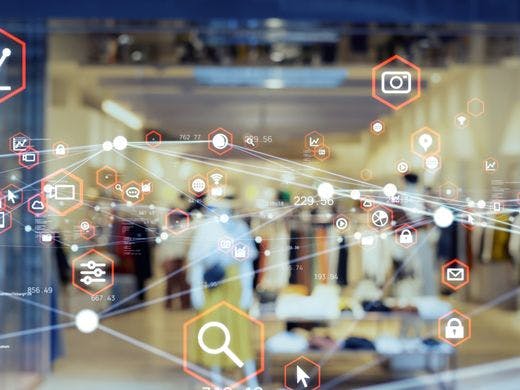Businesses, governments and consumers around the world are increasingly concerned about our planet’s challenges and are looking for ways to act. One of the most notable responses from businesses has been the race to set ambitious net zero targets, increasingly aligned to the Science Based Target Initiative (SBTi). Given the contribution the retail industry makes to the underlying drivers of climate change, this includes many global retail organisations. The UK retail industry alone has value chain emissions of 215 MtCO2e (million tonnes CO2-equivalent) per year – equivalent to that produced by 57 coal-fired power plants in one year - so what’s the impact for your business?
The impact of different categories within the consumer sector varies and the emissions across the supply chain are also relatively distinct. For example, food systems are responsible for over a third of global greenhouse gas (GHG) emissions. Over 70% of these emissions come from agriculture and land use. The fashion industry accounts for 8-10% of global CO2 emissions and almost 20% of wastewater, predominantly driven by the textile production process.
Setting a commitment is one thing - especially when it’s public - but achieving it is another altogether, a problem that many corporates, large and small, are starting to realise. While 40% of retailers may be on track to meet Scope 1 and 2 targets, less than 20% are on track to meet their net-zero targets.
Scopes Demystified
Trying to reduce GHG emissions across the business value chain without quantifying the baseline impact would make changes futile. The GHG Protocol aims to tackle this by providing global GHG accounting standards for measuring and reporting emissions whilst guiding companies through the complex process. The data-driven approach behind the scope-based system allows businesses to classify their emissions into direct and indirect emissions.
Scope 1: Direct emissions from company-owned or controlled sources. This would include combustion of fuels at sites, through owned vehicles and leaks from equipment operations.
Scope 2: Indirect emissions caused by the purchase of electricity, steam, heating and cooling for own company use. For example, this would include the electricity and space heating needed for warehouses and stores.
Scope 3: Often a catch-all Scope for the ‘rest’, it refers to indirect emissions associated with a company’s value chain. For most companies (even beyond retail), Scope 3 accounts for over 70% of emissions. In a retail and consumer context, this includes emissions from raw materials, production processes, third-party transportation and distribution, employee travel, operational and post-consumer waste. It also includes the emissions sold products, from appliances that directly consume energy, to the indirect use of energy such as washing and drying apparel or cooking food.
The Innovation Play
The role of innovation is fundamental here in tackling the climate challenge for retail, but it cannot solve everything. For Scope 1 and 2, a considerable proportion of these emissions can be reduced by switching to renewable energy sources, electrification of owned fleet and energy efficiency technologies.
Despite its complexity, the role of innovation and technology has the highest applicability to drive impact in Scope 3. Some of this requires business model and internal business/operating model changes, such as new circular models around resale and recycling to employee commuting schemes. From the use of advanced materials in products and packaging to new agricultural technologies and direct air capture (DAC) innovations, the power of technology can accelerate the process of decarbonisation.
Changing Consumer Behaviour
As discussed in our recent blog on Shein, sustainability is an important factor in consumer buying decisions, but factors such as price, quality and convenience are still the key drivers. Globally, household consumption contributes to 72% of global GHG emissions. In the UK, an average consumer’s GHG footprint is 12.7 tCO2e. That’s the same as every person eating over 1,000 beef steaks in one year, or driving once around the world. 30% of the impact is directly related to retail products such as buying food and drink or clothing, and 28% of the footprint is indirectly related to retail such as the use of electricity to run a fridge and washing machine.
Addressing the whole value chain is imperative here as solely focusing on the supply chain can end up blindsiding efforts to decarbonise – the end consumer is as important as any other stakeholder. Brands and retailers have a crucial role here to shift consumer behaviour into more sustainable choices. Using changes in design, operating models and technology alongside collaboration with suppliers will have the strongest positive impact on the climate challenge.
If you’d like to understand how innovation and technology can support your efforts to reach net-zero and reduce your environmental impact, please don’t hesitate to reach out to the Innovation team at True.


